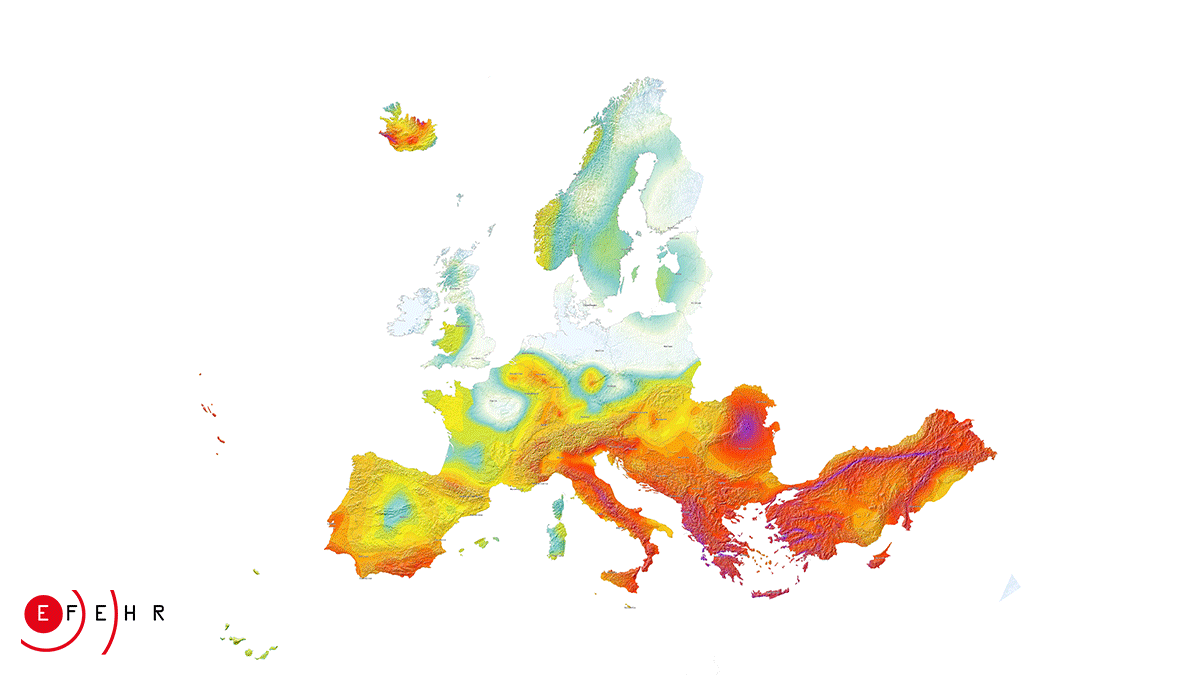Historic
The National Institute for Research and Development for Earth Physics - NIEP is the successor of research institutions that aimed to study earthquakes.
In 1895, the first seismic station in Romania was established, within the Meteorological Institute of Bucharest.
The institutions that dealt with research in the field of Earth physics were, in order: the Center for Geophysical Research (CCG) of the Romanian Academy (1961-1970), followed by the Institute of Applied Geophysics (1970-1974) and the Institute of Geology and Geophysics (IGG, 1974-1977), both belonging to the Ministry of Mines, Petroleum and Geology.
In February 1977, the Center for Earth Physics (CFP) was established by merging the Department of Seismology within the Institute of Geology and Geophysics of Romania with the Geodynamics laboratory within the Romanian Academy.
In 1994 the Center for Earth Physics (CFP) was transformed into the National Institute for Earth Physics - NIEP, and in 1996, it became the National Institute for Research and Development for Earth Physics - NIEP.
NIEP is coordinated by the Ministry of Research, Innovation and Digitalization, the activity of the institute being regulated by a series of normative acts:
See documents
Structure
The National Institute for Research and Development for Earth Physics carries out scientific research and technological development activities in the field of Earth Physics, in general, and seismology in particular.
The scientific research within the institute is structured on five laboratories:
Laboratory of Seismology and Lithosphere Structure - conducts fundamental and applied research to understand the triggers of earthquakes, their parameters, the propagation of seismic waves, local effects, levels of hazard and seismic risk and tsunami.
- Advanced studies of seismicity (including historical seismicity) and macroseismicity
- Seismic source physics
- Seismic wave propagation
- The structure and dynamics of the Earth's interior
- Seismic hazard assessment and tsunami
- Earthquake forecast
Laboratory of National Seismic Network
- deals with the installation, maintenance and modernization of equipment, transmission, collection and archiving of seismic data, permanent seismic monitoring of the territory and informing decision makers about the parameters of earthquakes;
- ensures the exchange of data with international seismology centers and is part of the large scientific research infrastructures considered by the National Strategy for Research, Development and Innovation 2014-2020 (SNCDI), but also of the research infrastructure European Plate Observing System (EPOS );
Laboratory of National Data Center
- ensure the archiving of seismic data and Romania's technical participation in global seismological monitoring, in support of verifying compliance with the Treaty prohibiting total nuclear experiments (CTBT - Comprehensive Nuclear-Test-Ban Treaty), through the Red Mountain seismological station (MLR) and the National Data Center (ROM CND);
- elaborates the revised seismic bulletins, generates and updates the Official Catalog of earthquakes registered on the Romanian territory - ROMPLUS;
- ensures the monitoring of infrasound sources by processing and analyzing the data recorded by the Romanian acoustic stations (BURARI 3 and IPLOR).
Laboratory of Engineering Seismology
The activity within the Engineering Seismology Laboratory focuses on fundamental and applied research related to:
- Engineering seismology;
- Seismic hazard at regional and local level (microzoning);
- Mechanics and nonlinear dynamics of degraded rocks (earths) during strong earthquakes. Experimental studies on resonant columns;
- Local effects assessed in terms of seismic response of the land mass;
- Development and implementation of nonlinear seismology in engineering applications for hazard assessment and seismic risk reduction of densely populated areas;
- Elaboration of studies and researches of seismic location for nuclear power plants and for other objectives of national importance (dams, military constructions, bridges, hospitals, etc.);
- Seismic risk studies for urban areas, industrial structures and transport networks.
Laboratory of Applied Geophysics, Prevention and Education



